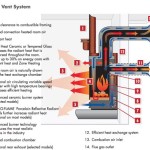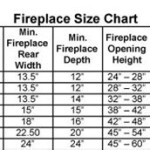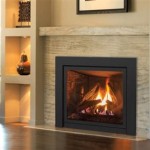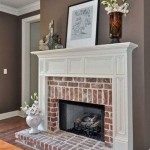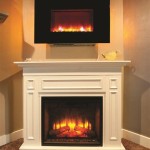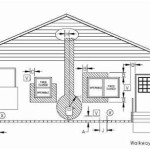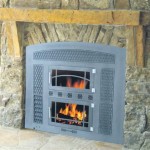Two-Sided Fireplace Ideas: Unifying and Dividing Spaces with Warmth
A two-sided fireplace, also known as a see-through or peninsula fireplace, offers a unique architectural feature that simultaneously unites and subtly divides spaces. Unlike traditional fireplaces designed to radiate heat and ambiance in a single room, a two-sided fireplace acts as a focal point visible from two adjacent areas. This design element provides a compelling blend of aesthetics and function, adding value and character to a home.
The appeal of a two-sided fireplace lies in its ability to create visual interest and warmth in distinct zones. Consider a master suite where the fireplace separates the sleeping area from a sitting room or bathroom. Or visualize an open-concept living space where the fireplace defines the dining area and living room without completely closing them off. In either scenario, the fireplace becomes a conversation starter and a source of shared comfort.
Numerous aspects warrant careful consideration when integrating a two-sided fireplace into a home design. From fuel types to architectural styles, understanding the available options and their specific implications is vital for achieving a successful and satisfying outcome. This article will explore various two-sided fireplace ideas, offering insights into design concepts, fuel options, and installation considerations.
Design Concepts for Two-Sided Fireplaces
The design possibilities for two-sided fireplaces are extensive, bounded only by imagination and structural limitations. The first step in planning is to determine the desired style and how it will complement the existing interior design. A modern aesthetic might call for clean lines, minimalist materials like concrete or steel, and a focus on geometric shapes. Conversely, a traditional design could incorporate natural stone, intricate detailing, and classic architectural elements.
Consider the overall flow of the spaces the fireplace will connect. The fireplace can be designed to be symmetrical, creating a balanced look from both sides, or asymmetrical, introducing a dynamic element to the room layout. The height and width of the fireplace should be proportional to the room sizes and ceiling heights. A fireplace that is too large can overwhelm a space, while one that is too small may appear insignificant.
Framing materials significantly contribute to the overall aesthetic. Brick, stone, wood, tile, and metal are all common choices, each offering a distinct look and feel. Brick and stone lend a rustic or traditional charm, while sleek metal frames create a contemporary vibe. Tile offers a wide range of colors, patterns, and textures, allowing for personalized customization. The surrounding wall can also be incorporated into the design, creating a feature wall that enhances the fireplace's presence.
The visual appeal of a two-sided fireplace can be amplified with creative lighting. Recessed lighting above or below the fireplace can highlight the texture of the materials. Accent lighting can be used to draw attention to specific features, such as a mantel or decorative elements. The play of light and shadow adds depth and dimension, enhancing the fireplace's overall impact.
Specific design considerations should be made depending on the room's function. In a bedroom setting, a lower fireplace might be ideal for creating a cozy ambiance while lying in bed. In a living room, a taller fireplace could serve as a visual anchor, defining the seating area. If the fireplace is used to separate a kitchen and dining area, it can incorporate storage solutions, such as shelves for cookbooks or wine racks.
Fuel Options: Selecting the Appropriate Heat Source
Selecting the appropriate fuel type is crucial for a two-sided fireplace, as it impacts not only the aesthetic and environmental impact but also the cost and maintenance requirements. The main fuel choices are wood, gas, and electricity, each with its own set of advantages and disadvantages.
Wood-burning fireplaces offer the traditional ambiance of crackling logs and a genuine wood-burning scent. However, they require a chimney for venting smoke and combustion byproducts, which can be a significant construction undertaking. Wood fireplaces also demand regular maintenance, including cleaning the chimney to prevent creosote buildup, storing firewood, and managing ashes.
Gas fireplaces provide a convenient and clean-burning alternative to wood. They can be fueled by natural gas or propane, offering consistent heat output with the turn of a switch. Gas fireplaces typically require venting, but ventless options are available, although they may not be suitable for all spaces due to potential concerns about indoor air quality. Gas fireplaces also offer a variety of realistic log sets and flame patterns to mimic the look of a wood-burning fire.
Electric fireplaces are the most versatile option, requiring no venting or fuel lines. They can be installed virtually anywhere with an electrical outlet. Electric fireplaces produce heat through electric coils or infrared technology, and many models offer realistic flame effects and adjustable heat settings. While they may not provide the same level of heat as wood or gas fireplaces, they are a convenient and energy-efficient option for supplemental heating and ambiance.
The choice of fuel should align with personal preferences, lifestyle, and environmental considerations. Wood-burning fireplaces appeal to those who appreciate the traditional experience, while gas fireplaces offer convenience and control. Electric fireplaces provide flexibility and ease of installation. Considering long-term costs associated with fuel and maintenance is also important when making a decision.
Installation Considerations and Safety Regulations
The installation of a two-sided fireplace requires careful planning and adherence to building codes and safety regulations. Due to the complexity of the installation, it is generally recommended to hire a qualified professional to ensure proper construction and safe operation. Structural integrity, venting requirements, and fire safety are all critical aspects to consider.
The structural integrity of the surrounding walls and flooring must be adequate to support the weight of the fireplace. This may involve reinforcing the existing structure or adding additional supports. The fireplace design should also consider the existing ceiling height and load-bearing capabilities, ensuring that the fireplace does not compromise the structural stability of the building.
Proper venting is essential for wood-burning and gas fireplaces to safely exhaust smoke and combustion byproducts. The venting system must comply with local building codes and be installed according to the manufacturer's specifications. The chimney should be inspected regularly for damage or blockages. Improper venting can lead to dangerous buildup of carbon monoxide, posing a serious health hazard.
Fire safety is paramount when installing any type of fireplace. Non-combustible materials should be used for the fireplace surround and hearth extension. The area around the fireplace should be kept clear of flammable materials, such as curtains, furniture, and rugs. Smoke detectors and carbon monoxide detectors should be installed in the immediate vicinity of the fireplace to provide early warning of potential hazards.
In addition to building codes and safety regulations, homeowners should also consider insurance requirements. Some insurance companies may have specific requirements for fireplace installations, particularly wood-burning fireplaces. Checking with the insurance provider beforehand ensures coverage in the event of a fire or other related incidents.
Obtaining all necessary permits and approvals before commencing the installation is crucial. Building permits ensure that the fireplace meets all local building codes and safety regulations. Ignoring permit requirements can result in fines, delays, and potential safety hazards.
Lastly, maintaining the fireplace regularly is essential for ensuring its continued safe and efficient operation. This includes cleaning the chimney or venting system, inspecting the firebox for damage, and ensuring that all components are functioning properly. Regular maintenance not only prolongs the lifespan of the fireplace but also minimizes the risk of fire or other safety hazards.
In summary, a two-sided fireplace offers a unique and captivating design element that can enhance the ambiance and functionality of a home. By considering design concepts, fuel options, and installation considerations carefully, homeowners can create a stunning focal point that provides warmth and visual appeal for years to come.
:strip_icc()/101650552-e405da465bcf430c8a00a965d349be86.jpg?strip=all)
Two Sided Fireplaces

Double Sided Fireplace Design Ideas

Double Sided Fireplace Design Ideas
:strip_icc()/101878383-94197133bc5c4d6ab40663768b12d3af.jpg?strip=all)
Two Sided Fireplaces

40 Double Sided Fireplaces With Pros And Cons Digsdigs

Living Room Two Sided Fireplace Design Photos And Ideas Dwell

Pros And Cons Of Double Sided Fireplace Modus Fireplaces

23 Luxurious Double Sided Fireplaces Fireplace Photos

Double Sided Fireplace Design Ideas

Warm Your Home With Fireplace Decor Brock Built
Related Posts

